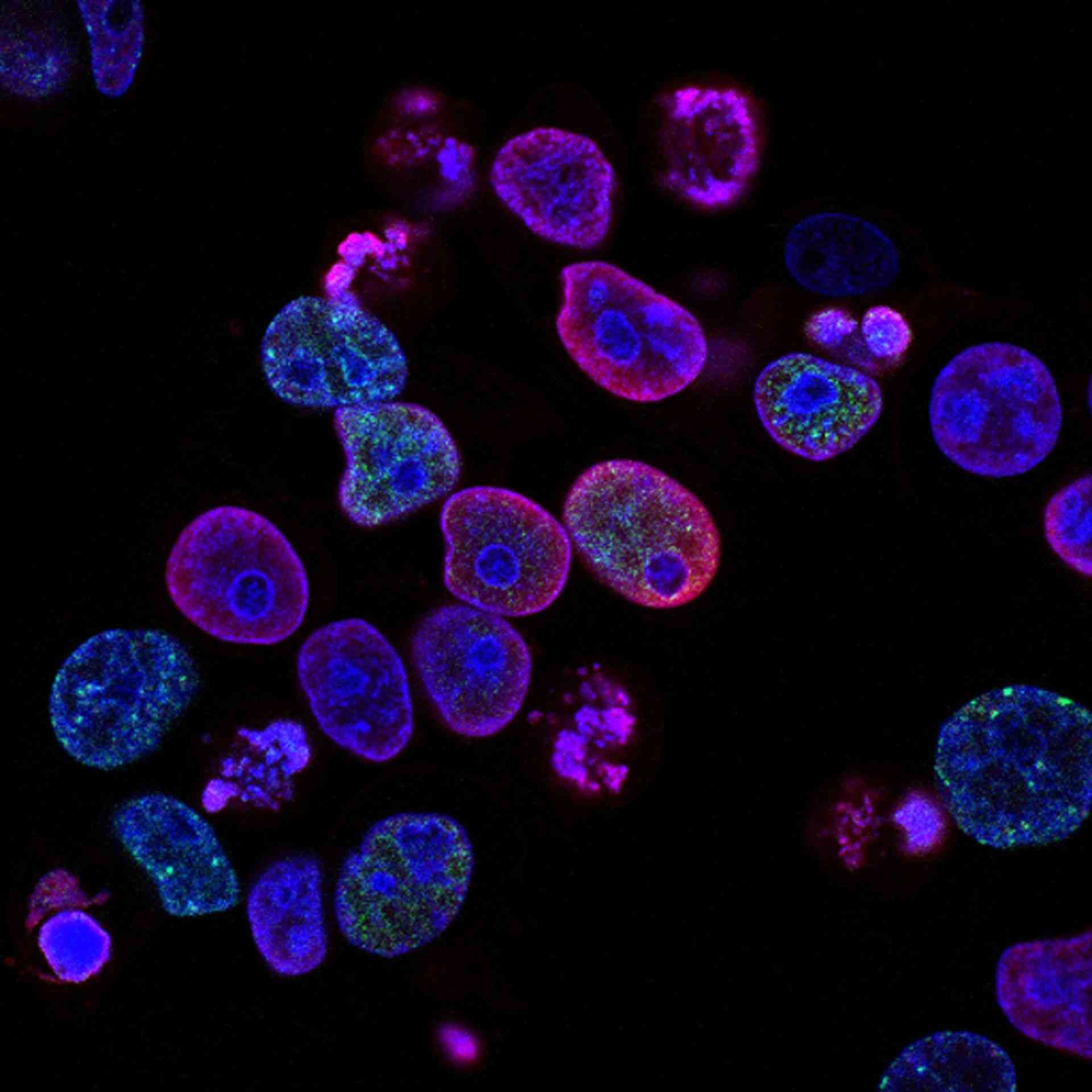Cancer is the uncontrolled growth of cells. It is also known as tumor. A tumor is a tissue mass resulted from uncontrolled cell growth. Cancer is a genetic disease. A single mutation is not enough to induce cancer. Accumulating lots of modifications in the genome during host lifetime contributes to cancer.
Cancer is mainly of four types:
- Carcinoma, which occurs in epithelial tissues.
- Sarcoma, which appears in connective tissues.
- Leukemia, also known as blood cancer.
- Lymphoma, also known as the cancer of the lymphatic system.
Cancer is a genetic disease. Now, what is a gene? It is the part of individual DNA that codes for an RNA or protein. If a mutation occurs in a gene that increases the chance of developing cancer, then that gene is called “cancer gene.”
Cancer gene is of two types:
- Oncogene
- Tumor-suppressor gene
Oncogenes promote cancer, while the tumor-suppressor genes helps to reduce the chances of developing cancer. Mutation in either of these genes can contribute to cancer. Mutations can be acquired by birth or it can be caused by other environmental factors such as smoking and drinking alcoholic drinks.
Usually, the cell division process, cell growth and cellular communication pathways are heavily controlled by multiple biological pathways. To overcome these limitations, it is necessary to accumulate mutations in various genes.

Now let’s take a look at the characteristics of cancer cells. These characteristics are also known as “cellular hallmarks of cancer.” For convenience, we will only discuss common characteristic features of all cancer cells.
- Replicative Immortality: Normal cells cannot commit to cell division indefinitely. With each mitosis, the telomere size decreases. At some point, cells stops dividing, it’s called “Hayflick limit”. Cancer cell uses telomerase enzyme to enlarge telomeres to enable cell division.
- Genome Instability: If a mutation is detected during normal cell division, the division process halts until the damage is repaired. The genes that contribute to this are known as “tumor-suppressor genes.” Mutation in these genes can contribute to genome instability in which incident cells keep dividing even after a mutation is detected.
- Growth Suppressor Signal Evasion: Growth suppressor signals determine if a cell will enter the cell cycle again to continue division. Cancer cells evade the growth suppressor signals to continue cell growth.
- Cell Death Resistance: Usually, cells die if their DNA damage is irreparable. But cancer cells can ignore cell death by expressing anti-apoptotic proteins that commit to controlled cell death, apoptosis.
- Sustained proliferation: Cancer cells utilize various growth factors to strive in a hostile environment. These growth factors promote cell growth without growth factor signals.
- Altered Metabolism: Cancer cells acquire energy from an unexpected metabolic source such as glucose fermentation which occurs only in the hypoxic condition in healthy cells. It is known as the “Warburg effect.”
- Avoid Immune Destruction: Several mechanisms are deployed by cancer cells to avoid being detected and destroyed by immune cells which includes up-regulating several key proteins such as PDL-1(Programmed Death Ligand-1).
- Angiogenesis: For additional growth, nutrition, as well as oxygen, is necessary. As a tumor grows, the demand for nutrition increases thus the necessity to create new blood vessel arise. The process of creating a new blood vessel is called angiogenesis.
- Metastasis: The spreading of cancer cells to other parts of the body from its source is called Metastasis.

Once cancer metastasizes, it is impossible to stop it from growing. Evidence shows that cancer metastasizes very early during its development. Metastasized cancer cells can stay dormant for months. The quiescent cancer cells show reduced cellular activities; thus, they’re harder to detect with a cancer screening test. That’s why cancer comes back again even after seemingly successful treatment. Some cancer cells become resistant to therapies due to mutation which also contributes to its return even after successful chemotherapy. It is still unknown how cancer cells regain their ability to reproduce after ending its dormancy, but it is thought that they utilize proliferation promoter signals from their micro-environment.
Almost 10 Million people die from cancer annually. Cancer itself doesn’t contribute to cancer related mortality directly. The morbidity rate due to cancer-induced organ failure is relatively low. Humans can stay alive even after cancer has replaced more than 90 percent of the liver. Mostly what contributes to mortality is cancer poison syndrome. Some common cancer poison syndromes are cachexia, thrombosis, excessive pain etc.
“Prevention is better than cure,” this idiom is more than true for cancer conditions. There are no effective drugs against cancer which can confirm 100 percent success. Maintaining a healthy food habit and a healthy lifestyle is necessary to avoid cancer. Smoking, alcohol, coffee, casual sex etc. all contribute to cancer development so it is best practice to avoid them as much as possible.
Sources:
- Hallmarks of Cancer. Retrieved from https://www.news-medical.net/life-sciences/Hallmarks-of-Cancer.aspx on 04/22/2020
- Revisiting the hallmarks of cancer Retrieved from https://www.ncbi.nlm.nih.gov/pmc/articles/PMC5446472/ on 04/22/2020
- Hallmarks of Cancer: The Next Generation. Retrieved from https://www.cell.com/fulltext/S0092-8674(11)00127-9#:~:text=The hallmarks constitute an organizing,and activating invasion and metastasis on 04/22/2020
- Overview of Cancer. Retrieved from https://www.msdmanuals.com/home/cancer/overview-of-cancer/overview-of-cancer#:~:text=Cancerous (malignant) cells can develop,can be cancerous or noncancerous. on 04/22/2020
- Cancer Overview. Retrieved from https://www.health.harvard.edu/a_to_z/cancer-overview-a-to-z on 04/22/2020
- Overview of Cancer. Retrieved from https://www.hopkinsmedicine.org/health/conditions-and-diseases/cancer on 04/22/2020
Subscribe to our newsletter to stay updated


